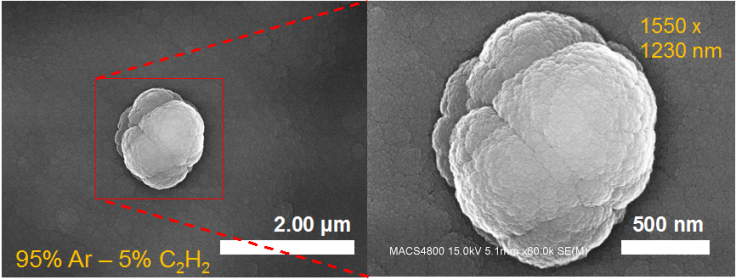NASA Scientists Recreate Planet-Forming Space Dust Using Simulator

A team of scientists at NASA’s Ames Research Center in Moffett Field, California, has successfully recreated space dust by using a specialized facility called the Cosmic Simulation Chamber, or COSmIC.
According to NASA, scientists have used COSmIC to reproduce the processes that occur in the atmosphere of a red giant star, leading to the formation of planet-forming interstellar dust. The space agency said that scientists will use the dust -- similar to the dust grains that form in the outer layers of dying stars-- to gather clues to better understand the composition and the evolution of the universe.
“The harsh conditions of space are extremely difficult to reproduce in the laboratory, and have long hindered efforts to interpret and analyze observations from space,” Farid Salama, project leader and a space science researcher at Ames, said in a statement. “Using the COSmIC simulator we can now discover clues to questions about the composition and the evolution of the universe, both major objectives of NASA's space research program.”
In the past, the inability to simulate space conditions prevented scientists from identifying extraterrestrial materials. But COSmIC has helped researchers successfully simulate gas-phase environments or planetary atmospheres by expanding gases using a cold jet spray of argon gas seeded with hydrocarbons that cools down the molecules to temperatures representative of the outer space environments.
COSmIC recreates the extreme conditions that reign in space where average temperatures can be less than -270 degrees Fahrenheit, and the environment is bathed in ultraviolet and visible radiation emanating from nearby stars.
“During COSmIC experiments, we are able to form and detect nanoparticles on the order of 10 nm size, grains ranging from 100-500 nanometers and aggregates of grains up to 1.5 micrometers in diameter, about a tenth the width of a human hair, and observe their structure with SEM, thus sampling a large size distribution of the grains produced,” Ella Sciamma-O'Brien, a research fellow at Ames, said.
Scientists hope that the new results can provide new clues on the type of grains present in the dust around stars, which, in turn, will help them understand the formation of planets, including Earth-like planets.
© Copyright IBTimes 2024. All rights reserved.






















